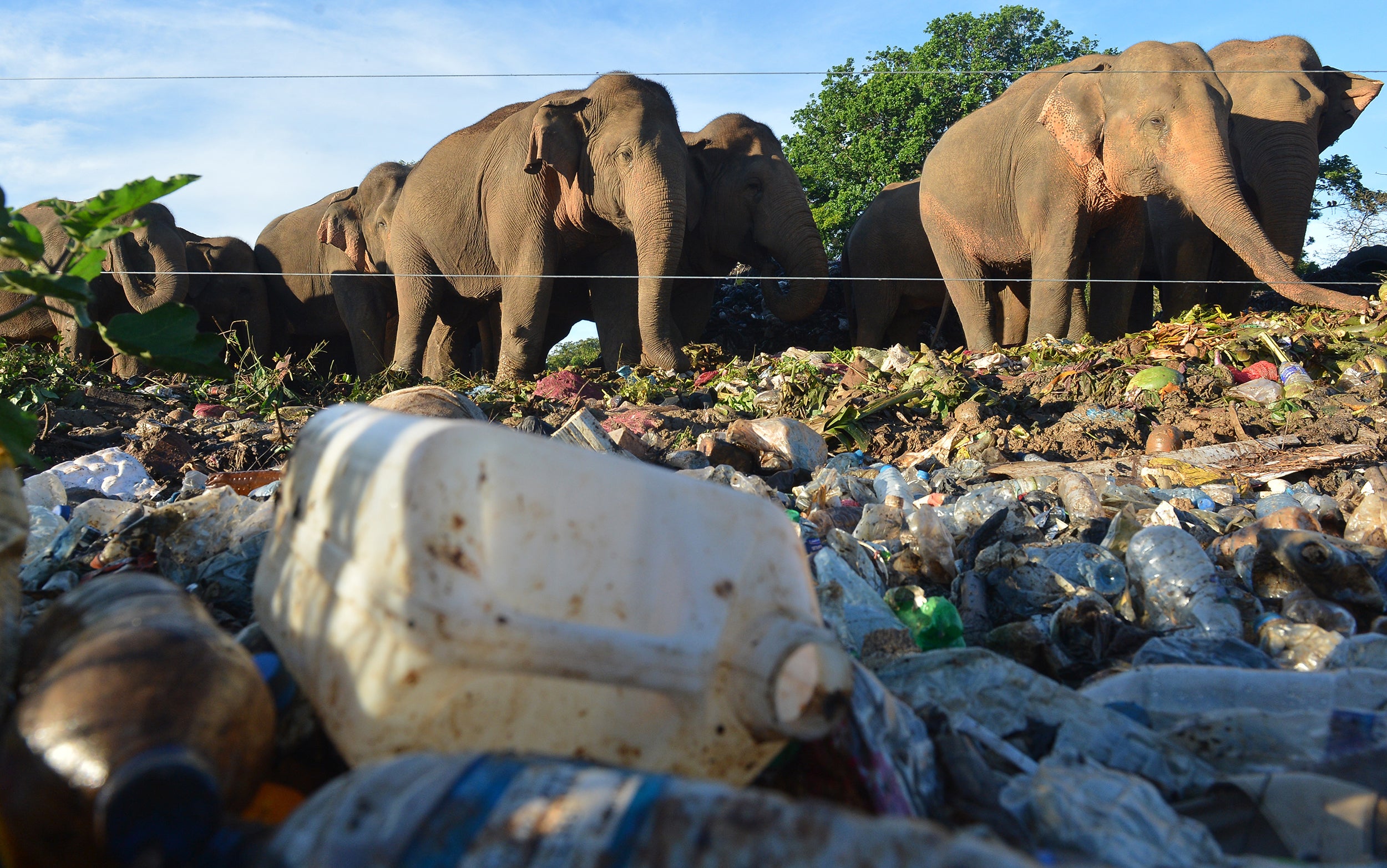Migratory species in Asia-Pacific are most vulnerable to plastic pollution, UN report says
Air-breathing freshwater mammals, Asian elephants, and migratory birds are highly threatened

Migratory species in the Asia-Pacific region are among the most vulnerable to plastic pollution, according to a new review of studies published by the UN.
The report, released on Tuesday by the UN’s Convention on the Conservation of Migratory Species of Wild Animals (CMS), assessed for the first time the impacts of plastic pollution on animals living on land and in freshwater environments in the Asia-Pacific region.
“The focus has thus far been on clean up in our oceans, but that is already too late in the process. We need to focus on solutions and prevention of plastic pollution upstream,” CMS Executive Secretary Amy Fraenkel said in a statement.
The report noted that species protected under CMS are impacted by plastic pollution in river ecosystems and on land, including freshwater species, land animals, and birds.
“Since most plastic pollution is generated on land, it is unfortunately not surprising that it is impacting migratory and other animal species that live on land and in freshwater environments,” Ms. Fraenkel said.
According to the report, air-breathing freshwater mammals like river dolphins in the Ganges, land animals like Asian elephants, and migratory birds are most impacted by plastic pollution in the Asia-Pacific region.
With migratory species already under several environmental stressors, including the impacts of climate change, the report said plastic pollution is an additional stressor that threatens their survival.
“Migratory species will encounter a wider range of different environments including ones that are industrialised and highly polluted, leading to the possibility of higher exposure to plastics and associated contaminants,” the UN experts noted in a statement.
In the case of fresh water mammals, the experts said, entanglement in plastic waste prevent them from reaching the surface, and causing them to drown.
With only 3,500 individuals of the Ganges River Dolphin estimated to be living in the wild, the report confirmed that the species is second most vulnerable species at risk of entanglement and negative effects from discarded fishing gear in the river.
In the Mekong river, it said drowning because of entanglement in nets is the “key threat” to Irrawaddy Dolphins of which there could be less than 100 individuals in the wild.
Entanglement as well as ingestion of plastics also threaten the river mammal Dugong in India and Thailand, the report noted.
The report particularly highlighted the threat posed by discarded fishing gear in the Ganges and Mekong rivers for aquatic species which drown due to entanglement.
River dolphins in India caught in fishing nets, either accidentally or intentionally, are also killed to extract their oil, which is then used as bait for catching catfish, a recent report noted.
While research into the impacts of plastic pollution in terrestrial environments is “under-represented,” the report said based on existing evidence that it could be “adversely impacting” a wide variety of animals on land.
Citing earlier studies, the report said Asian Elephants in Sri Lanka and Thailand have been seen ingesting plastic and scavenging on rubbish dumps.
According to the UN experts, migratory birds are the most observed species interacting with plastic.
They say birds such as the Black-faced Spoonbill and the Osprey have been observed making nests out of plastics, using fishing lines and shipping debris, often resulting in the entanglement of their chicks.
Migratory seabirds in the Asia-Pacific region like the Black-footed Albatross, and Laysan Albatrosses could be particularly vulnerable to plastic ingestion since they may not distinguish floating plastic items from prey when flying over the ocean, the report noted.
These plastic debris may accumulate in the birds’ gut or be passed to their offspring through regurgitation, it added.
The experts warn that the global capacity to manage plastic pollution is not keeping pace with projected growth in the plastics market.
By 2030, even with ambitious reduction measures, they say up to 53 million metric tons of plastics could enter aquatic ecosystems annually and if no improved measures are taken, “this figure could reach 90 million tons annually.”
And due to the longevity of plastics, the report says its global environmental contamination could increase dramatically for years to come even as the long-term implications for ecosystems, the food web and human health are yet unclear.
“Clearly, we have huge gaps in the scientific literature of the threats of plastic pollution on many CMS species. We need more research to better identify risks to these species, and take appropriate steps to address them,” Ms Fraenkel added.
Subscribe to Independent Premium to bookmark this article
Want to bookmark your favourite articles and stories to read or reference later? Start your Independent Premium subscription today.

Join our commenting forum
Join thought-provoking conversations, follow other Independent readers and see their replies